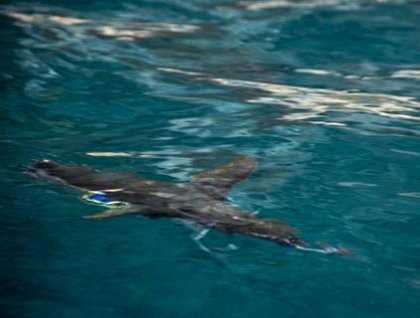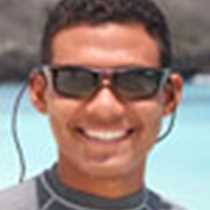Volcanoes decorate the landscape, clouds cover the skies and a gentle breeze warned us about the changing weather. We woke up navigating the western waters of the Galapagos archipelago next to the Island of Isabela, the Island shaped like a sea horse and formed by six large active volcanoes. As the National Geographic Islander navigated in search of big marine mammals, we crossed the equatorial line.
This island has several visitor sites and today we visited one called Punta Vicente Roca. As soon as we dropped anchor the Zodiacs were deployed, so that we could cruise the coast. Multiple species of sea birds like boobies, noddies, pelicans and more littered the volcanic landscape. Sea turtles and sea lions showed the snorkelers what could be expected later.
For those wanting to swim and snorkel here, the experience couldn’t be better. Penguins, cormorants, turtles and abundant tropical fish were found.
After a full morning we departed to a different location, the Island of Fernandina where Punta Espinoza is located.
Fernandina is known by many as the “baby island” of the Galapagos and it has been formed by its only volcano, La Cumbre. When we landed on this place the guests could imagine how hard it must have been for all of the species to colonize the Islands and establish themselves later on. Marine iguanas cover the lava flows by hundreds, some of them resting and preparing for the night and others just starting to feed on the algae found in the cold waters of the western Galapagos waters.
This magical place is the perfect escape for those from busy cities who need rest and time to enjoy nature. The expedition is just starting and there are even more exciting discoveries to come.







